ROAST CHICKEN 101
There are many people out there that only buy the chicken in parts. Boneless, skinless chicken breasts and sometimes drumsticks if they are feeling adventurous. This is because many are intimidated by the thought of even dealing with a whole chicken. Let me help you with our Roast Chicken 101

The truth is though, roasting a chicken is relatively easy. In fact, sometimes it can be easier than cooking it in parts. Not only is it easier, but it’s fast. You can have a full dinner on the table in about an hour and a half, give or take with lots of time to relax while it roasts too!
In fact, cooking with a whole chicken makes more sense economically. Not only can you make yummy homemade chicken stock, but you can use the leftover chicken for tacos, salads, soups and more. Plus, there is the added bonus of everything being cooked in one pan. Caramelizing your vegetables in delicious chicken juices is something that should be celebrated on its own!
This roast chicken recipe is probably one of the first dishes that is really a one pot meal that will feed the whole family in style!
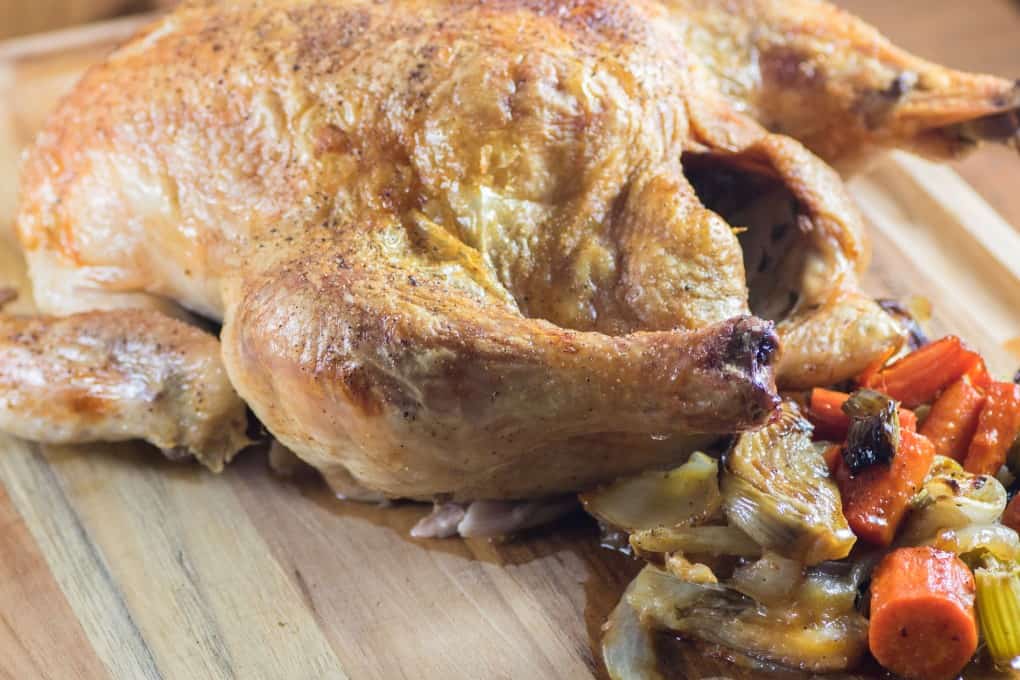
Learning How to Roast a Chicken will open the door to so many new and exciting cooking ventures. Roast Chicken 101 is our first in the series on 101 cooking and we will be doing more basics recipes to help you through things like a turkey, roast, ham and more.
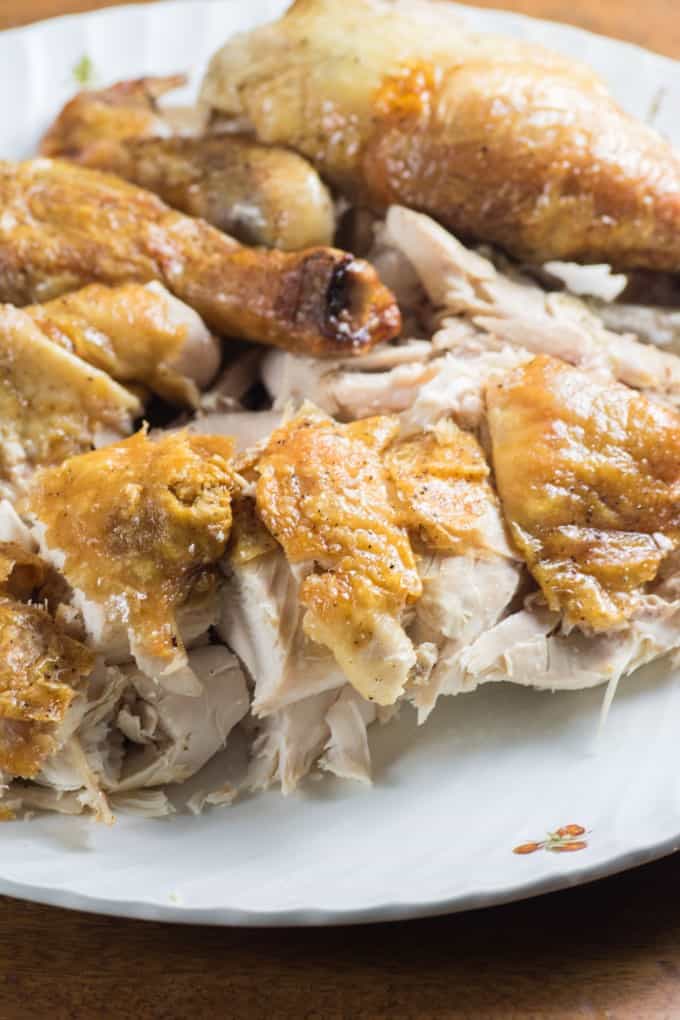

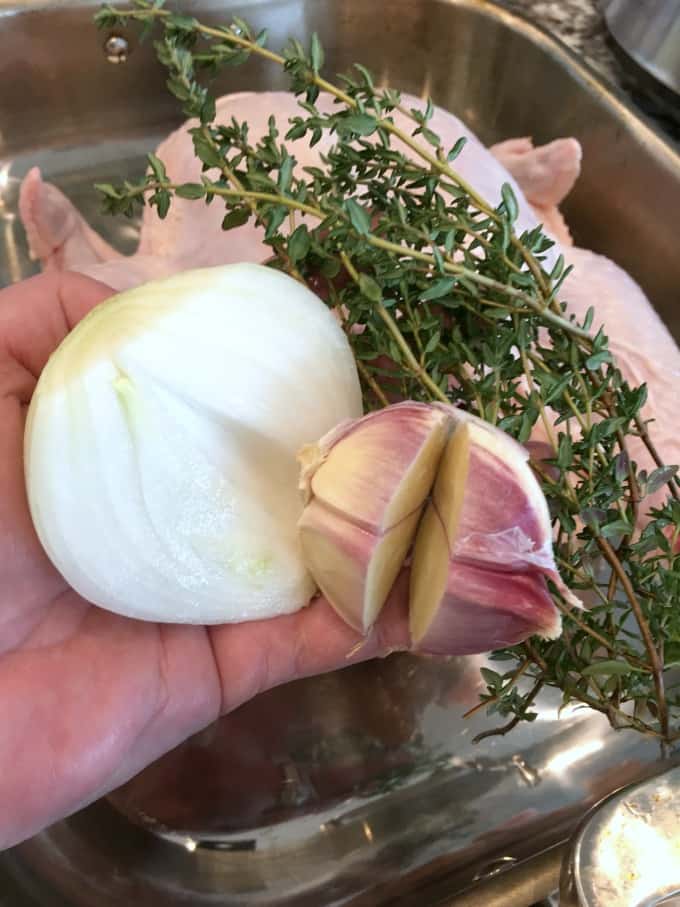
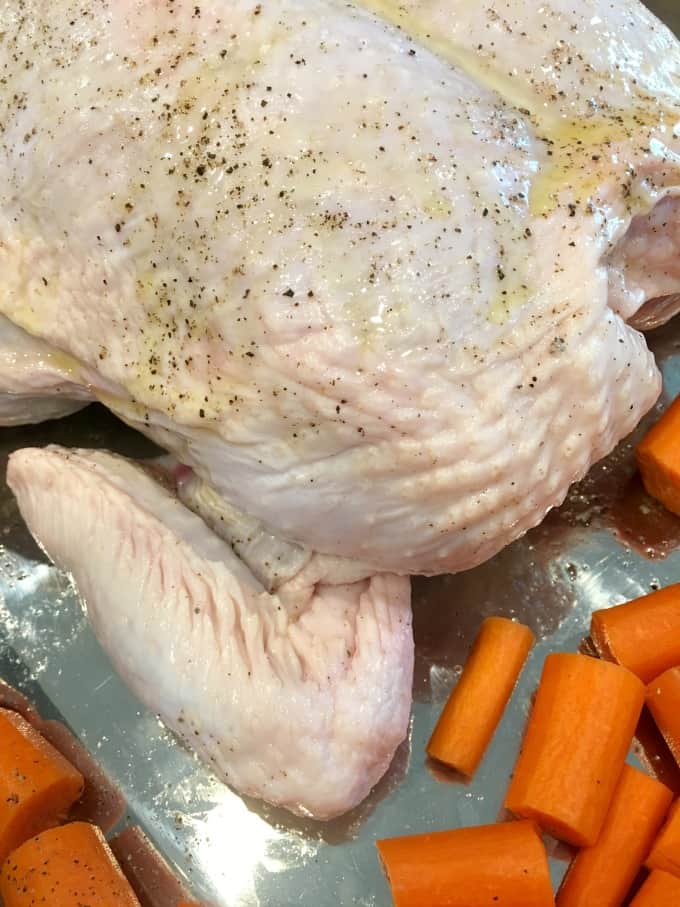
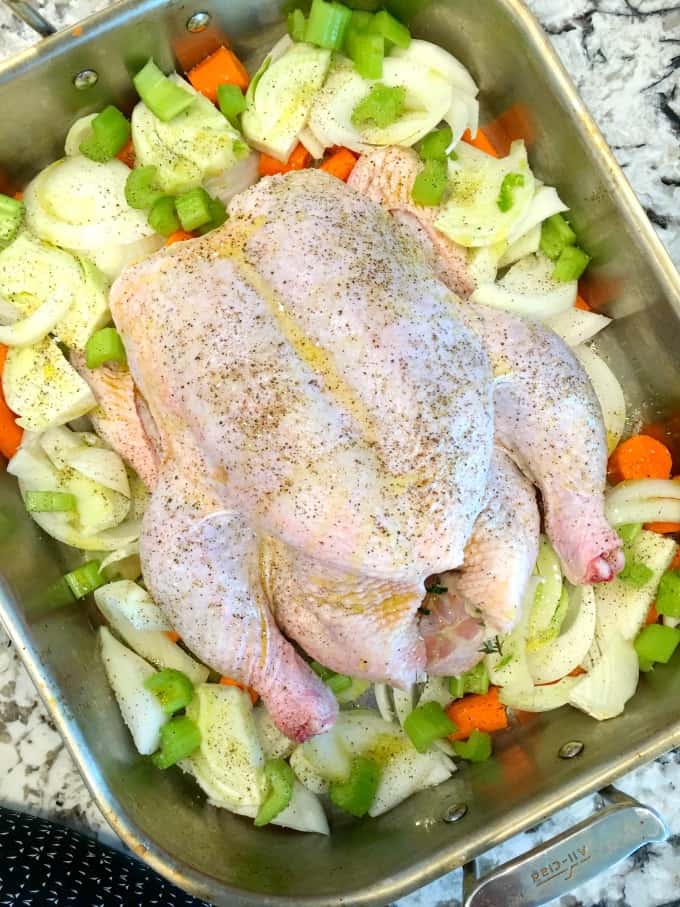


The truth is though, roasting a chicken is relatively easy. In fact, sometimes it can be easier than cooking it in parts. Not only is it easier, but it’s fast. You can have a full dinner on the table in about an hour and a half, give or take with lots of time to relax while it roasts too!
In fact, cooking with a whole chicken makes more sense economically. Not only can you make yummy homemade chicken stock, but you can use the leftover chicken for tacos, salads, soups and more. Plus, there is the added bonus of everything being cooked in one pan. Caramelizing your vegetables in delicious chicken juices is something that should be celebrated on its own!
This roast chicken recipe is probably one of the first dishes that is really a one pot meal that will feed the whole family in style!

Learning How to Roast a Chicken will open the door to so many new and exciting cooking ventures. Roast Chicken 101 is our first in the series on 101 cooking and we will be doing more basics recipes to help you through things like a turkey, roast, ham and more.

CHOOSE THE CHICKEN

The first thing you need to do is decide what kind of chicken you are going to purchase. There are several options out there from free-range chickens to organic chickens and more. Choose what is best for your family and their preferences.
You will also need to make the choice between a fryer or roasting bird. The difference is mainly about size and age as a fryer is usually smaller and younger and roasters are plumper, bigger and older. Make the choice based on the size of your family and how much they generally eat.
I love going to the farmers market to get a Hutterite chicken. They are nice and big and about 5 or 6 lbs.
HOW TO ROAST A CHICKEN
Preparation
1. Remove packaging – Remove chicken from the package and discard all packaging.
2. Remove the giblets – Check the cavity and make sure to remove the giblets and kidneys if necessary. Rinse inside and out and and pat dry with paper towels.
1. Remove packaging – Remove chicken from the package and discard all packaging.
2. Remove the giblets – Check the cavity and make sure to remove the giblets and kidneys if necessary. Rinse inside and out and and pat dry with paper towels.

3. Stuff the chicken – Season the chicken inside with salt and pepper. Place inside the chicken garlic cloves, 1/2 onion and thyme. You can substitute the onion for 1/2 lemon or orange if you like.

4. Truss the chicken, or don’t – Some believe that trussing the chicken helps to cook it more evenly and make the presentation better. This is totally up to personal preference and doesn’t have to be done in order to have a delicious chicken. I, at the very least tuck the wings in under so the don’t get burnt. Preheat your oven to 425F.

5. Place chicken in roasting pan – Salt and pepper the outside. Roughly chop up veggies like carrot, celery, fennel, sweet onion and potatoes and place them under or around the bird.
6. Get ready to roast – Season the veggies with salt and pepper and drizzle everything generously with olive oil.
7. Put chicken in the oven – Place chicken in the oven for approximately an hour to an hour and half (for about 4-6 lb. bird) or until an instant read thermometer placed in deepest part of the breast reads 165 degrees.
8. Remove chicken from oven – Place a large piece of foil over the chiken, this is called tenting and allow the chicken to rest for about 15-20 min. before serving.
6. Get ready to roast – Season the veggies with salt and pepper and drizzle everything generously with olive oil.
7. Put chicken in the oven – Place chicken in the oven for approximately an hour to an hour and half (for about 4-6 lb. bird) or until an instant read thermometer placed in deepest part of the breast reads 165 degrees.
8. Remove chicken from oven – Place a large piece of foil over the chiken, this is called tenting and allow the chicken to rest for about 15-20 min. before serving.

9. Serve – Now is the perfect time to serve up your perfectly roasted chicken. Know how to carve the bird!? This lovely tutorial with pictures will show you how.
If you have been intimidated by roasting a whole chicken, you need not fear as it’s not as difficult as it looks.
INGREDIENTS
- 1 5-6 lb. chicken
- Salt and pepper to taste
- Large garlic cloves or half a head, sliced in half
- ½ onion (lemon or orange)
- Bunch of thyme
- One large sweet onion, cut into thick slices
- 6 carrots, peeled and cut into chunks
- 1 fennel bulb, cut into chunks
- 3 celery, cut into chunks
- Olive oil
INSTRUCTIONS
Preparation
- Remove packaging – Remove chicken from the package and discard all packageing.
- Remove the giblets – Check the cavity and make sure to remove the giblets and kidneys if necessary. Rinse inside and out and and pat dry with paper towels.
- Stuff the chicken - Season the chicken inside with salt and pepper. Place inside the chicken garlic cloves, ½ onion and thyme. You can substitute the onion for ½ lemon or orange if you like.
- Truss the chicken, or don’t – Some believe that trussing the chicken helps to cook it more evenly and make the presentation better. This is totally up to personal preference and doesn’t have to be done in order to have a delicious chicken. I, at the very least tuck the wings in under so the don't get burnt. Preheat your oven to 425F.
- Place chicken in roasting pan - Salt and pepper the outside. Roughly chop up veggies like carrot, celery, fennel, sweet onion and potatoes and place them under or around the bird.
- Get ready to roast – Season the veggies with salt and pepper and drizzle everything generously with olive oil.
- Put chicken in the oven - Place chicken in the oven for approximately an hour to an hour and half (for about 4-6 lb. bird) or until and instant read thermometer placed in deepest part of the breast reads 165 degrees.
- Remove chicken from oven - Place a large piece of foil over the chiken, this is called tenting and allow the chicken to rest for about 15-20 min. before serving.
- Serve – Now is the perfect time to serve up your perfectly roasted chicken. Now how to carve the bird. This lovely tutorial with pictures will show you how.
MORE RECIPES @ https://noshingwiththenolands.com
BERITA LENGKAP DI HALAMAN BERIKUTNYA
Halaman Berikutnya
0 Response to "ROAST CHICKEN 101"
Posting Komentar